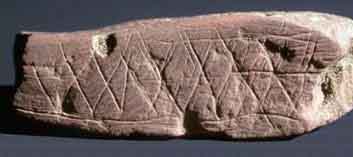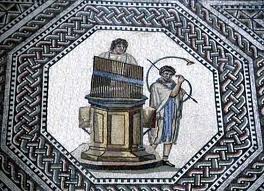Digital Art History

For Michelangelo, the world is "digital" from its creation. Is it a work of art (as the Bible could suggest it), or just the product of random times necessity (to follow the Epicurean atomists)?
Prehistory and Antiquity
From the origins to 4000 BP. The pre-digital bases.
Before the emergence of life, it is non pertitnent to talk of art as a conscious creation. But even today we are sensitive to the beauty of nature, at least of certain places or species. That may take us to the sentiment that some kind of divinity planned, for instance, the harmony of spheres.
Life goes much farther. Structures become strong enough for forms of art. Some coherence, if not harmony, is necessary to survice. Life engages itself in complex processes for
- fight, for attack and defense (prey camouflage, visual exaggerations of predators),
- mating, from floral blossoming of vegetals to courtship display).
The complexity of these processes may include symbiosis between different species, even the collaboration of plants and animals for seed dissemination.
For the most advanced animal, "conscious" processes operate. The magpie steals jewels to ornate its nest. And some big monkeys are even able to paint, not so differently of humans.
Then art comes out nearly as soon as humanity. Given the (pre-)digital context, these works cannot be very digital. Nevertheless, some express a level of abstratino which we can even consider generative, for instance the abstract lines of Blomberg stones.
Text, as far as we know, is linked to music and to digital structures, like the poetry metrics.

This stone, found in Blomberg, could be the first digital (and generative) work of art. It dates back to 75 000 years B.P.
Music digitizes the pitches, to please our ears, that are built to sort sounds in series of harmonics. Pythagoras takes it as a model even for the whole universe (the music of the spheres). And the first keyboards are born for the organ. Music also digitizes time structures, with rhythms answering to those of breath, heart, walking and dancing. But music instruments are also digital in the etymological sense ot the term: you use your fingers to play them. The process is partly engaged with string instuments. It goes to a radical limit more present today than ever : the keyboard, created for the organ.
In music, the organ is an impressive forerunner (1st century), with its keyboard external (hydraulic) energy.
Theater plays use machines.

A hydraulic organ, 2d or 3d century AD. The organ is digital on ways : the keyboard (fragmentation, and the etymologicl root of "digit") and the motor (hydgraulic in these times). From the website Pianola.
Painting and sculpture are produced in the paleolithic era, in spite of the small number of humans(around 50 000 in France in palaeolithic times ) and life conditions in short lives.
In the Roman period, the Elder Pliny writes the first available history of art, included in Historia Naturalis. The integral text, with comments, is available online in a latin/english version by Cornell University. He appreciates mainly the realism or technical performances, thoug insisting also on symmetry. He says about Pamphilos that he " was the first painter who was thoroughly trained in every branch of learning, more particularly in arithmetic and geometry; without which, so he held, art could not be perfec" (Pliny, Historia naturalis, XXXV,78). Among Pamphilos' disciples are Apelles, know to us in particular by his Alexander's battle. This work is known through the mosaic found in Pompeii. The mosaic works and their use of tiles may be compared to the divisionnism of the impressionists and post-impressionists. See for example the comments of Paolo Moreno (Appelles, the Alexander Mosaic. Skira, New York, 2001).

The columns of Vitruvius. Parts and assembly rules.
In sculpture, a kind of motricity and automation is apparent in pottery (Graufesencque) or small figures (Tanagra). But, somehow, architecture also gets some industrial mood, with systematic use of general models (the Doric temple) or the repetitive constructions of civil engineering.
Architecture formalizes its basic processes of fragmentation/composition: stone cutting (high level digitization, should we say) and powder/paste making (concrete, clay) in order to mold or cast new forms (a deep level of digitization). On a higher level, first for the Greek temples then on wider range of buildings, forms are elementarized (see, later, mainly in the industrial era, for a definition) into orders (doric, ionian, corinthian, mainly), and the assembly rules formalized by Vitruvius.
DICCAN'S PARTNERS:

Paris ACM Siggraph, the French chapter of ACM Siggraph, worldwide non-profit organization of computer graphics.

Les Algoristes, an association of artists using their own algorithms in their work.
